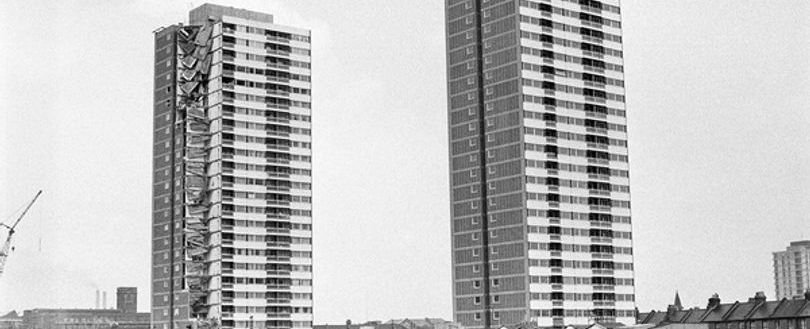
Government advisory group reveals urgent structural safety concerns in UK housing
Like it? Share it!
20 November 2023
The minutes from the group's first meeting in December 2021 reveal that the market is perceived to be prioritising profit over safety, with a particular focus on the risks associated with unstrengthened buildings reminiscent of the Ronan Point tragedy.
The SSWG, composed of industry experts, identified several critical issues during their initial meeting:
-
Ageing Large-Panel System (LPS) Buildings: The group expressed concern about ageing LPS buildings, particularly those that may not have undergone proper strengthening over the years.
-
Reinforced Autoclaved Aerated Concrete (RAAC): The use of RAAC in residential and public buildings raised concerns among the experts.
-
Addition of Floors (Airspace Developments): The practice of adding floors to existing buildings was flagged as a potential risk.
-
Steel and Timber Frame Construction: The use of steel and timber frame construction for medium and high-rise buildings was identified as a worrisome practice.
-
Cladding Materials: Brick slips and other cladding materials that could pose risks, including falling and injuring people on the ground, were highlighted.
The minutes emphasised the experts' need to better understand the scale of the problem, as many structural defects remain hidden. The group expressed dissatisfaction with the market's response, stating that profit appears to be prioritised over safety.
A particular concern highlighted in the report is the structural integrity of LPS buildings, using the Ronan Point collapse in 1968 as a reference. The group noted that many LPS buildings, intended to undergo remedial work in previous decades, had not been adequately strengthened. The report suggests that a national-level assessment of the acceptable risk level for these buildings, along with standardised risk mitigation measures, should be considered by the government.
In response to these revelations, Bristol Council recently evacuated 400 residents from a tower block due to fire and structural safety risks associated with LPS construction. A Freedom of Information Act request revealed that the building had not been strengthened since the 1970s.
The SSWG also raised concerns about the competency of structural engineers, noting that some who failed professional exams continued to practice. The complexity of assessing existing buildings was highlighted, suggesting a need for a 10-year programme to educate more structural engineers.
One safety manager at a social landlord with a number of LPS buildings previously told Inside Housing: “Our LPS buildings are 60 years old, and they’ve never had any kind of structural scrutiny. They’ve had some historic strengthening work, but then no subsequent follow-up.”
The manager added that while this issue was being taken seriously within their organisation, this was not the case everywhere. “We’ve not had a structural collapse since Ronan Point, so it hasn’t been as topical as fire safety. I think it’s going to become the next crisis because it’s been ignored.”
A spokesperson for the Department for Levelling Up, Housing and Communities said: “Following the Grenfell Tower tragedy, the government has introduced some of the toughest building safety regulations in the world through its landmark Building Safety Act. The act also introduced a new Building Safety Regulator to assess the safety and standards of all buildings, to monitor and investigate any potential risks or changes that may affect residents’ safety, and to oversee a culture of higher standards throughout our built environment.
“The Building Safety Regulator actively monitors structural and fire risks across the built environment and advises government on any action that may be needed.”
As the housing industry grapples with these structural safety challenges, the Department for Levelling Up, Housing and Communities emphasised its commitment to monitoring and addressing structural and fire risks through the newly established Building Safety Regulator. The regulator is tasked with ensuring higher standards and assessing the safety of all buildings in the UK.
View the SOURCE here.
Our eNews provides regular insight into industry trends, news headlines, and product and service information. For news articles parallel to those mentioned above, sign up for our eNews. Click here to sign up: Subscribe to our enews (fia.uk.com)
Related training
Related news
-
New FIA Guidance on BS 5839-1 Fire Alarm Categories
23 December 2025
-
Launching our Practical Training and Assessment Course
09 December 2025
